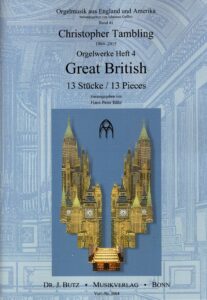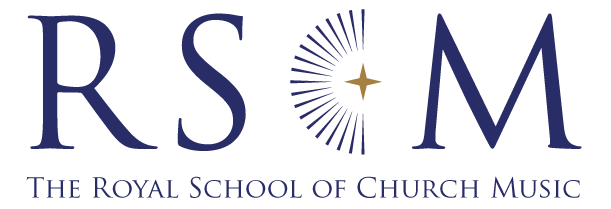Reviews of CDs
* Worth hearing
** Recommended
*** Essential listening
CHORAL CDs
***
MATTHEW COLERIDGE: REQUIEM
Choir of Royal Holloway / Southern Sinfonia / Simon Earl (organ) / Maxim Calver (cello) / Karin Dahlberg (soprano) / Rupert Gough ♦ Convivium Records CR081
The forces of the Choir of Royal Holloway and Southern Sinfonia present this excellent retrospective of music by Matthew Coleridge. The first part of the disc is taken up with his Requiem. The opening Introit is beautifully paced, allowing the harmonic clashes time to resonate. The intensity and urgency of the Kyrie is a sudden change of mood, and the forces respond well to Coleridge’s demands and Rupert Gough’s expert direction. The closing Lacrimosa movement ends this hauntingly beautiful piece with a moment of serene stillness.
Cellist Maxim Calver and soprano Karin Dahlberg make wonderful contributions, not only here but notably in And I saw a new heaven, one of the other seven tracks that follow the Requiem. The choir give fine, committed performances throughout, with impeccable pitch, blend and diction. In particular, My beloved spake receives an absolutely stunning account. And there was light, Abendlied and a setting of the Stabat Mater dolorosa are included, before a spirited Magnificat and Nunc Dimittis brings the disc to an exciting, indeed spectacular, conclusion.
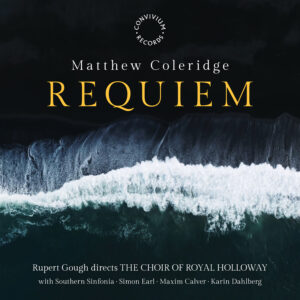
***
PHILIP MOORE: VIA CRUCIS
Richard Moore (organ) / The Revd Dr Barry Orford (narrator) ♦ Convivium Records CR079
Via Crucis is a devotional journey charting the final moments of Jesus’ earthly life. The Passiontide prose of Eric Milner-White is interspersed with 15 musical reflections that cover the Good Friday story from ‘The Agony in Gethsemane’ to ‘The Burial’ in the tomb. Philip Moore’s musical reflections – the score of which was reviewed in Sunday by Sunday, no. 99 (December 2021) – beautifully capture the emotion and drama of these 15 readings. At times, the influence of Olivier Messiaen can be heard.
The acoustic of Guildford is another star of this recording. There’s little echo or reverb, which allows for great clarity, not just with the intricate harmonic writing or rhythmical urgency of some of Moore’s reflections, but also for Barry Orford’s narration to be heard cleanly and clearly. Organist Richard Moore gives virtuosic yet sensitive performances. This disc is not something you would listen to for an evening’s entertainment – it isn’t designed for that. However, as a liturgical concept, especially if you can’t attend a Holy Week service or if you wish to reflect on the Easter story, it is strongly recommended.
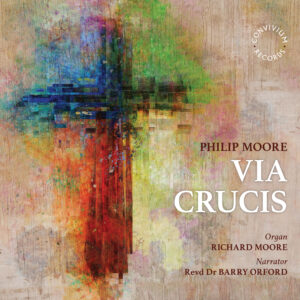
**
REFORMING HYMNS
Musica Ficta / Fredrik Bock (lute) / Søren Christian Vestergaard (organ) / Bo Holten ♦ Dacapo Records 8.226142
The Danish national recording label Dacapo Records presents us with this rather niche, but exquisitely sung, 30-track programme that charts the development of hymns and church music sung by religious communities in Denmark during the Reformation. The Copenhagen-based vocal ensemble Musica Ficta join forces with musicologist Bjarke Moe to explore Danish Reformation hymnody from an international perspective, with links to European musical works from the 16th century. The first section explores the plainsong and Renaissance polyphony that would have been sung by professional musicians. Lassus’s bouncy six-part Ad te leuaui animam meam is wonderfully performed. The following section explores how the music moved from complex polyphony to include parts for congregational participation. The next section explores the use of secular melodies in religious music. Fredrik Bock’s sensitive lute playing in Schlick’s Maria zart, von edler Art (his only contribution to this disc) is poignant and sensitive.
Søren Christian Vestergaard’s organ contributions of three chorale settings are a welcome inclusion to this disc. There’s nothing in the accompanying booklet notes giving any information about the organ. Suffice to say the mechanical action is prominent! The disc concludes with a series of pieces celebrating the new hymns that originated from the Reformation period.
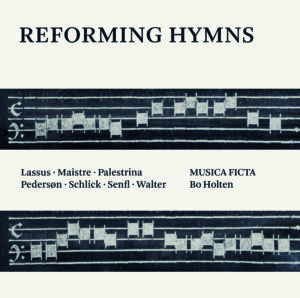
**
SIMON MOLD: PASSIONTIDE – A LENTEN CANTATA
Knighton Consort / David Cowen / Helen Bailey (soprano) / Philip Leech (tenor) / Stephen Cooper (baritone) / Jeremy Leaman (bass) / Roxanne Gull ♦ Divine Art DDA25238
This substantial meditation in the style of baroque Passion settings, with hints of Stainer’s The Crucifixion and Maunder’s Olivet to Calvary, tells of the Passion of Christ. The work is in five distinct sections: The Last Supper, Gethsemane, Jesus before Pilate, The Crucifixion and the Death of Jesus. Combining hymns (suitable for congregational singing), arias and recitatives, choral motets and organ interludes over the course of an hour and a quarter, Mold takes the performers and listeners on a moving Passiontide journey. The music is accessible and would make a lovely alternative to the aforementioned Stainer and Maunder pieces. The contributions of the vocal soloists would benefit from more finesse and at times a sense of drama. The real stars of the show are the nine singers of the Knighton Consort who gave performances of maturity and sensitivity.
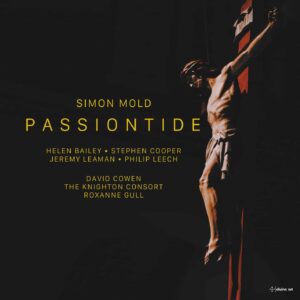
**
FRANK MARTIN: MESSE POUR DOUBLE CHŒUR; MAURICE DURUFLÉ: REQUIEM
La Maîtrise de Toulouse / Conservatoire de Toulouse / Juliette Mey (soprano) / Alain Buet (baritone) / Jérôme Cuvillier (cello) / William Fielding (organ) / Mark Opstad ♦ Regent REGCD557
This inspired pairing makes for a wonderful CD. The Frank Martin Mass setting for two unaccompanied choirs, an extraordinary work from the mid 1920s, is sung with such energy and commitment from La Maîtrise de Toulouse under their director Mark Opstad. It shows a young choir (students at the Toulouse Conservatoire) at the peak of their powers with beautiful blend, clear lines and excellent diction. Opstad gives the harmonic dissonances a spine-tingling glow. The performers give their all in the Gloria, with outstanding energy.
Duruflé’s Requiem receives a profoundly beautiful performance, with a maturity that belies the youth of the singers. William Fielding’s organ accompaniment is supportive although there are some interesting registrations! Opstad’s interpretation is well paced with a good sense of urgency and intensity when needed, Jérôme Cuvillier’s cello solo in the Pie Jesu is sublime. Juliette Mey (a former member of La Maîtrise) and operatic baritone Alain Buet provide excellent solo contributions. It is a disc to treasure, notwithstanding a couple of small intonation lapses.
Ian Munro
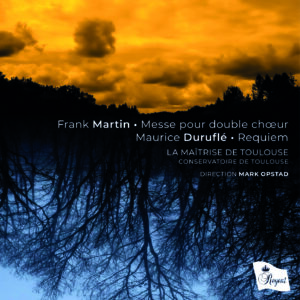
BOOKS
SITTING ON A PIN: A MUSICAL MEMOIR
Barry Rose
Self-published 320pp. HB 978-1-3999-0667-8 £18.95
Dr Barry Rose, OBE has surely already done enough in his long career to ensure he is for ever associated with his remarkable success in the world of cathedral music as a trainer of church and cathedral choirs, even from scratch, and renowned in particular for his capacity for getting the very best out of the boy choristers at his disposal, irrespective of their age and background.
Anyone unaware of the scale and diversity of Barry’s achievements will learn much from listening to recordings of the choirs he has taken charge of over the years; secondly from viewing the inspirational illustrated talk with which, in 2018, he delighted supporters of the ARCM (Archive of Recorded Church Music); and thirdly from acquiring a copy of his memoirs Sitting on a Pin, in which he gives a lively, engrossing and refreshingly candid account of how he came to enter the world of music at all, and how things have gone for him at different times in his illustrious career.
At one point in this memoir he recalls a brief conversation he once had with a senior cleric who asked him when his next big occasion was going to be. ‘Choral evensong, later this afternoon,’ was his reply. He meant it. As one of his St Paul’s lay clerks says of him, ‘Barry Rose puts more love and care into a daily evensong than anyone else I have ever known.’ The BBC came to grasp and value that fact too, of course.
In this sparkling autobiography, what comes through most is the lengths to which Barry has always pushed himself, in his own relentless ‘pursuit of excellence’, be it in the world of producing live cathedral music, or of religious broadcasting, of taking his choirs on tour or of setting up and running a specialist record company.
Over the years, not everyone working under and alongside Barry managed to keep up with the required pace, to satisfy all the demands made on them and to empathize with some of the targets set, but there is no doubt that his earnest endeavours continue to expose those who have ‘stayed the course’ to a greater understanding and appreciation of what ‘undisputed excellence’ is, and what is required in order to achieve it.
This book is well illustrated, engagingly written and thought provoking; it offers good value. For anyone interested in the working lives of cathedral musicians, and of one outstanding cathedral musician’s noteworthy, multi-faceted working life in particular, it is required reading.
Robert Wilson

Reviews of printed music
CHORAL MUSIC
E Easy
M Medium
D Difficult
ANTHOLOGIES
THE OXFORD BOOK OF CHORAL MUSIC BY BLACK COMPOSERS [mostly M]
Compiled and edited by Marques L.A. Garrett
SATB with and without keyboard accompaniment
Oxford pb 978-0-19-356100-7 £20.95
spiral-bound 978-0-19-356101-4 £28.25
From the Portuguese Renaissance composer and theorist Vicente Lusitano, born around 1520, to American composer and pianist Brittney Boykin, born in 1989, this selection spans the centuries and continents, if with a preponderance of pieces from North America written in recent decades (17 of the composers are still alive). From the UK, Ken Burton sets A Prayer with words by Paul Dunbar (the black American son of emancipated slaves) for unaccompanied mixed voices. Its characteristics typify this collection: it is a classical piece, eminently suitable for use as, say, an evensong anthem. There are gospel and blues influences, and an optional one-bar solo that could be improvised. It combines sadness and hope, in a way that many spirituals do, although none of the pieces here are specifically based on that genre.
Also from the UK are two pieces by Samuel Coleridge-Taylor (1875–1912), the second of which, The Lord is my strength, is an easy, joyful Easter anthem. Lusitano’s setting of the Lenten text Emendemus in melius was published in Rome in 1551 and here has been transposed up a minor third, making it suitable for SAATB. Florence Price (1887–1953) is represented by the unaccompanied SATB version of her Resignation, which in melodic line and harmonies shows the influence of spirituals – and also in its gentle melancholy, despite looking forward to the promise of eternal life. Nathaniel Dett (1882–1943) claimed to have based his Son of Mary on a traditional melody – it deserves to be widely sung, with its imaginative treatment of the opening verses, before an animated fugato section leads to an expressive and radiant conclusion.
Of the 35 pieces, 23 are sacred and suitable for singing in worship, including five psalm settings. Most of the pieces seem to be available separately, whether in print or as digital downloads, and performances can be found on YouTube and other streaming platforms. The volume includes details of sources and variants, and also brief biographies of each composer.
Stephen Patterson
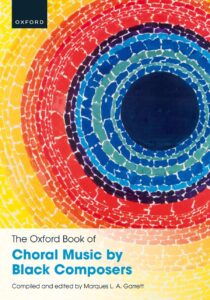
ANTHEMS
O LORD, GRANT THE KING A LONG LIFE [E/M]
William Child
SSATB and organ
Church Music Society RS155 £3.35
Published too late for a review before the coronation, this setting by William Child (1606/7–97) is an easy anthem, not for use only on ‘kingly’ occasions; its three verses from Psalm 61 regularly crop up in evening prayer and, in this setting, end with a series of joyful Alleluias. Verse sections for S, A and B need not necessarily be sung solo. It is a useful alternative to the setting by Thomas Weelkes (or Greene’s more extended treatment).
CANTIQUE DE JEAN RACINE Op. 11 [E/M]
Gabriel Fauré
SATB and organ or piano
Bärenreiter BA25136 £3.50
This new edition of a much-loved motet is taken from the in-progress, complete edition of the music of Gabriel Fauré (1845–1924). The musical text appears identical to other editions, including elision signs between syllables. This urtext confirms that the accompaniment is ‘orgue ou piano’. The price is very reasonable.
THE FRUIT OF LIFE [M]
Timothy Rogers
SATB or AATB
Encore Publications 020663 £2.10
This setting of words from the York Mystery Plays, traditionally performed on the feast of Corpus Christi, has the musical feel of a carol. The six verses, telling the story of Adam and Eve being driven from Paradise, are set with much variety of choral texture and of rhythm. It is a charming setting at first, but halfway through moves down from F major to D minor as the consequences of the story are made clear, with an angry final cadence. Versions are available for SATB or AATB – identical, save for a major third transposition.
VENITE (PSALM 95) [M]
Philip Moore
SATB and organ
Encore Publications 020716 £2.95
LORD JESUS CHRIST [M]
Philip Moore
SATB and organ
Encore Publications 020716 £2.95 / 020709 £2.10
The choir parts of the Venite are comparatively easy, with plenty of mixed two-part writing. The organist needs rhythmic precision through changing time signatures, but the writing is not difficult. Commissioned for Harrow School, a big sound is imagined – and indeed specified in the organ part, with Chancel Tubas, 8ft Tuba and Trompette Militaire requested at different times. It would sound thrilling, however, in a bright, confident performance, whatever forces and specification are available.
Lord Jesus Christ is a setting for ATB of Robert Bridges’ translation of a 16th-century German hymn, starting ‘Now cheer our hearts this eventide, Lord Jesus Christ, and with us bide’, with the words slightly changed and rearranged. It was written for the York Minster choir, when singing was allowed again in the Minster two years ago – quiet, serene, and a perfect, reflective evensong anthem.
James L. Montgomery
MASS SETTINGS
GUILDFORD MASS [M/D]
Will Todd
SATB and organ
Boosey & Hawkes BH13295 £4.99
MISSA BREVIS [M]
Becky McGlade
S solo, SATB
Boosey & Hawkes BH13726 £3.25
Will Todd wrote his setting of the English language (Common Worship, Order One) text of the Mass in 2011, eight years after his Mass in Blue, with which it shares exciting rhythms and scrunchy harmonies. But for this liturgical setting, the organ has replaced piano and other instruments, giving the opportunity for sustained, dense chords, out of which the music of the quieter section emerges. The Benedictus and some of the Kyrie eleison have the feel of plainchant; the Agnus Dei has an unexpected intensity. It is an imaginative and liturgically appropriate approach to the contemporary English text.
Becky McGlade is more conventional musically in her approach to the Latin words of the Mass, but with a commitment to and awareness of the effect of each sentence in the liturgy. The Sanctus and Benedictus are particularly rich, with a solo soprano soaring over the Hosannas. The D minor music of the Kyrie eleison reappears for the Agnus Dei, but in the major key for the final ‘Dona nobis pacem’ – a commonly found device, perhaps, but achieved here with particular skill and effectiveness.
MASS IN C MAJOR Op. 104 [E]
Ferdinand Hiller ed. Florian Ilge
SATB with organ ad lib.
Edition Dohr (Universal Edition) 12601 £25.50
MESSE BASSE [E/M]
Gabriel Fauré
S solo, SSA, organ or harmonium
Bärenreiter BA25151 £3.50
Ferdinand Hiller (1811–85) was an outstanding pianist (and dedicatee of Robert Schumann’s Piano Concerto) and also a conductor, successor to Mendelssohn as director of the Leipzig Gewandhaus Orchestra. His musical tastes were unadventurous, admiring Mendelssohn and Brahms and avoiding Liszt and Wagner – a conservatism that is evident in this four-part Mass that receives its first publication. It has the advantage of simplicity, with straightforward choral writing, no solos and an optional organ part that doubles the vocal lines. There are few surprises in the four-square pages of 4/4 or 4/2 metre – the most memorable events are the gentler triple-time passages at ‘Qui propter nos homines’ and the Benedictus.
The Messe Basse by Gabriel Fauré (1845–1924), a reworking of an earlier joint Mass setting by Fauré and his pupil André Messager, is deservedly popular with upper-voice choirs. It has now been published in an inexpensive off-print from the new complete Fauré edition. The large pages and small stave size may make it difficult for some singers, but the resulting fewer page turns will be welcomed by organists.
Stephen Patterson
ORGAN MUSIC
E Easy
M Medium
D Difficult
MANUALS ONLY
ORGAN WORKS VOLUME 2 [M/D]
(‘Free-form’ organ works, manuals only)
Dieterich Buxtehude ed. Harald Vogel
Breitkopf EB9306 €33.90
The present volume is the third in Harald Vogel’s new edition of the organ works of Dieterich Buxtehude (c.1637–1707). It includes all the manualiter works: the Praeludia, Toccatas, various Canzonas and the three Fugues. As with Klaus Beckmann’s edition published by Breitkopf in 1995–7, the pieces are presented in numeric order as they appear in the Buxtehude Werke Verzeichnis. The previous volumes in this series have already been reviewed in these pages and, given that the preface and the account of the editorial principles are reproduced verbatim (the latter in German only), it remains only to comment on the text of the music.
Whereas the pedaliter works presented some significant divergencies from the previous Breitkopf edition in terms of the pedal writing and details of rhythm, the works in the present volume are to a large extent identical to the readings given by Beckmann. Such divergencies are confined to what one might regard as seemingly superficial details: transferring a middle part to bass or treble clef, the omission of a cautionary rest or the addition of the occasional tie.
For readers who already have volume 2 of the Beckmann edition, this volume would largely be an unnecessary addition. But what it does offer is an exhaustive analysis of the sources and, as ever, an exemplary level of production from the publishers.
Warwick Cole
KLEINE ORGEL – GROSSE VIELFALT [E–M]
ed. Markus Frank Hollingshaus
Butz-Verlag BU3068 €22.00
It is a pity that no alternative English title is given: it translates literally as ‘Small Organ – Great Diversity’, and is a collection of 14 manuals-only pieces comprising at least 34 individual movements capable of being played on their own. Composers who may be known to English-speaking readers include Robert Jones, Martin Setchell, Peter Planyavsky, Andreas Willscher, Lothar Graap and Carsten Klomp. Hans-André Stamm quotes Scottish and Irish folk melodies in his Celtic Suite. Franz Josef Stoiber provides a Suite modale with four tributes to other composers (Bach and Handel included), finishing with a witty Toccatina. There are no liturgical items or pieces based on chorale tunes and very little counterpoint – just a plethora of entertaining music capable of being played on a single-manual organ without pedals.
Duncan Watkins
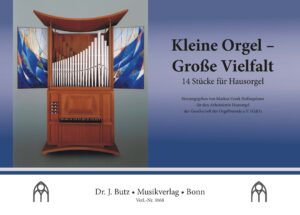
VOLUNTARIES AND RECITAL PIECES
EIGHT PIECES ON IRISH HYMN TUNES [M–D]
Orly Watson
Fagus-music.com £24.00
The eight tunes include three universally known – Slane, St Patrick’s Breastplate and St Columba – and two more, Gartan and Moville, found in a range of non-Irish hymnbooks. The other three – Armagh (by Charles Wood), Deus meus, adiuva me and The Star (An Réalt) – are fine tunes that are well worth seeking out. All eight are given inventive and varied treatments by Orly Watson, organist of Dromore Cathedral. The titles of each comprise the name of the tune and also a word that suggests the character of the piece: Fantasia, Reverie, Canzona, Intermezzo, Invocation, Theme and Variations, Improvisation and Rhapsody. They are structured to form a 20-minute suite for recital performance, but each can stand alone as an individual voluntary (for which an index of the pieces would be helpful, perhaps included in a future printing). Atmospheric and not shying away from dissonance, they are unlike the conventional hymn-tune voluntary but, the composer suggests, owe as much to the Irish landscape as to the melodies on which they are based.
Julian Elloway
CHORALE FANTASIAS [M]
Heinrich Scheidemann ed. Pieter Dirksen
Breitkopf EB8938 €34.90
Pieter Dirksen’s engagement with the keyboard music of Heinrich Scheidemann (c.1595–1663) has extended over several decades, most notably in an extensive monograph on the subject. Here he presents seven securely attributed chorale fantasias plus two additional pieces that Dirksen has ascribed to the composer.
The volume is produced to Breitkopf’s exemplary standard, and the edition is scholarly and thorough. There is the usual critical commentary and an extensive preface, the translation of which is in coherent, if not always idiomatic English. All the pieces presented here are transmitted through German tablature sources and the edition makes the customary nod to the original through the beaming (or not) of various rhythmic patterns. These may take some assimilation and there is the occasional unexplained inconsistency.
As Dirksen points out, Scheidemann is regarded as the originator of the chorale fantasia. The treatment of the chorale melody through ‘repeating, colouring, and fragmenting’ results in works that are extensive, with some lasting upwards of 10 minutes. Three of the pieces are for manuals only; the remainder make full use of the colouristic possibilities of the contemporary German organ. While the erudition and invention of the music might be lost on non-Lutheran congregations unfamiliar with the chorale tunes, this volume provides an informative link in the development of north German organ repertoire during the 17th century.
Warwick Cole
INTRODUCTION AND FUGUE IN F MINOR [D]
Alan Gray ed. David Patrick
Fitzjohn Music Publications £6.00
Although better known today for his choral compositions and hymn descants, two of which remain in the latest Ancient & Modern, Alan Gray (1855–1935) was described in his obituary in The Times as ‘a magnificent organist [and] skilful improviser’. David Patrick continues to make the organ music available and this Introduction and Fugue is his eighth publication of Gray’s music. It is a large-scale, passionate work, with the feel, at times, of an extended improvisation. The introduction evokes desolation – one is tempted to speculate on the impact of the loss of two of Gray’s three sons a few years earlier, near the end of the First World War. The fugue, with a melodious eight-bar subject, becomes more of a dramatic (and chromatic) fantasia. This appears to be the first appearance of the work since the original 1925 publication; it would make a strong impact in a recital programme.
SONATA NO. 2 IN D MAJOR Op. 9 [D]
Percy Buck ed. David Patrick
Fitzjohn Music Publications £13.00
I praised David Patrick’s edition of Percy Buck’s first Sonata in Sunday by Sunday 103 (December 2022). The second, written six years later in 1902, also opens with a movement marked ‘Fantasie’, an extended multi-section movement, with an opening theme returning rondo-like ‘quasi primo’. The final movement is actually headed ‘Finale, quasi Rondo’, a genial triple-time piece that could well stand alone as a voluntary. In between comes a ‘Cantilene’ in which a relaxed outer F major section over a (nearly) ostinato bass line frames a central section that starts ‘innig’ but becomes more excited – in its position and in its effect, it is the heart of the work.
GREAT BRITISH [E–M]
Christopher Tambling ed. Hans-Peter Bähr
Butz-Verlag BU3064 €16.00
This is an anthology of 13 pieces by Christopher Tambling (1964–2015) that were originally published by Kevin Mayhew in various collections, many of which are no longer available. It says much for the composer’s European reputation that this is the fourth volume of his music from Dr Butz’s publishing house. From an opening ‘Ceremonial March’ Royal Knights to the concluding Postlude on a theme by Orlando Gibbons, where Song 34 (or Angels’ Song) is given an unexpectedly rousing treatment, Chris Tambling’s wit and musical sensitivity are demonstrated in a collection of delightful surprises.
Duncan Watkins
